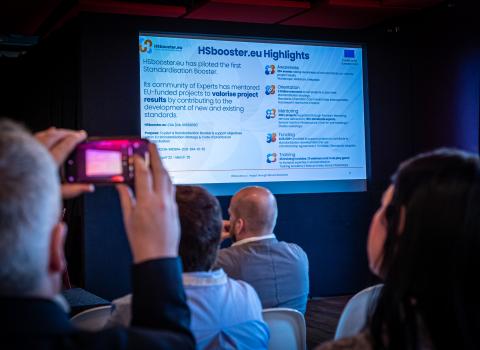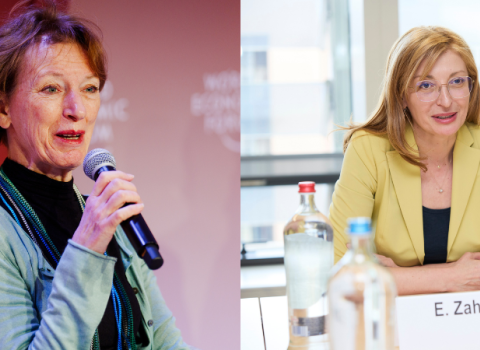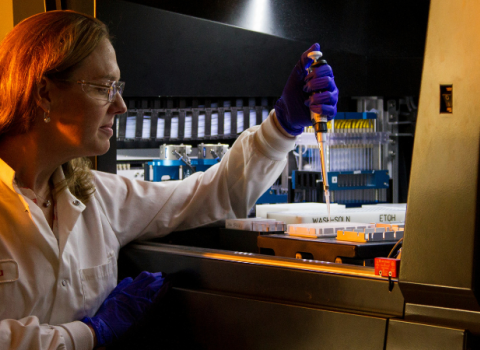
Jane Royston, professor of entrepreneurship
Lawrence Summers, the president of Harvard University, caused a major uproar earlier this year when he suggested that women have innately lower aptitudes than men, particularly in science and engineering. A storm of media coverage followed the comments, and more than 50 professors from Harvard protested against the remarks in a statement.
At the top
Science|Business profiles six women leaders in the business of science
Pamela Contag the president and co-founder of Xenogen Corporation, relies on and supports various networks of women with skills across industries. These networks helped her take her invention from the lab all the way to NASDAQ.
Jane Royston is a professor of entrepreneurship and was the founder and owner of a 100-strong software company (before she sold it to Cambridge Technology Partners). She earned a PhD in pure mathematics from the London School of Economics.
Monica Beltrametti leads the R&D center for Xerox in Grenoble, France. She earned a doctorate in astrophysics from the Max Planck Institute and gained valuable experience at the University of Alberta before going corporate.
Sue Ion is Director of Technology at British Nuclear Fuels, a member of Council on Science, which advises the UK government, and a vice president of the UK Royal Academy of Engineering.
In India, Swati Piramal proved that tradition need not hold women back by shifting the focus of her family business from textiles to medicine.
Gladys Monroy, a leading IP lawyer based in Palo Alto, California, switched tracks to law after working as a researcher in various university labs.
In a report released on 11 October, the Organisation for Economic Co-operation and Development (OECD) has found that women represent between 25 and 35 per cent of total researchers in most countries for which data are available. The report comes as the agency prepares to host a conference 16 and 17 November at the French research ministry in Paris entitled 'Women in Scientific Careers: Unleashing the Potential'.
'Making progress'
"It is clear from the available data that women are making progress in participation in the science workforce and in science education. This is a good thing, but there is still a ways to go...Promoting alternative career paths and entrepreneurship is one way women could benefit overall," says Mario Cervantes, senior economist and head of the women in science project at the OECD.
Government efforts plus new technologies and a growing push for diversity within industry are helping to close the gender gap in the world of science. But behind the broad trends lie individuals - and in an effort to understand the problem better, Science|Business selected a group of women to discuss their careers, obstacles and opinions. Our sample group is diverse (see box at right): An Indian woman leading a successful biotech company, an American who leads a dynamic intellectual-property practice, R&D directors inside two multionationals, Xerox and BNFL, to name a few. In addition, we conducted email conversations with scores of women engineers and business people around the world; a few of these are also included in our package.
The jobs, industries, countries and cultures of all these women are radically different. But they have several things in common: a determination to succeed, a strong interest in their field, a place to prove themselves and test their ideas and a solid educational foundation.
Participation remains low
And they are certain not the norm. They may have reached pinnacles in their fields and the situation has improved overall, but participation among women in the sciences in general, and in the business of science in particular, remains low.
In the European Union, the number of men in science and engineering increased by 4.9% from 1998 to 2002, while the number of women rose only 4.2%, despite the fact that they are already a minority, holding only 31% of the positions, according to European Commission figures.
It’s even tougher for women who are trying to break into science in industry. At present, women make up only 15% of industrial researchers in the European Union - half the proportion of women in the sciences generally. But Europe’s leaders have agreed that the proportion of Gross Domestic Product spent on R&D in the European Union should increase from 1.9% in 2000 to 3% by 2010, which would fuel the demand for researchers and should bring more women in.
Non-participation
Johannes Klumpers, the acting head of the Women and Science Unit at the EC, says, "It's a matter of democracy. With so few women in decision making, they’re simply not participating."
To understand the problem of low participation for women, analysts must examine the national context since some countries have implemented measures to increase the number of women graduates, and other countries have focused on keeping women in science after graduation, the OECD’s Cervantes says.
"In the United States, child care is often the issue. But, in other countries where governments have generous welfare benefits, women want more autonomy or independence in the lab," says Cervantes. Participants at the OECD conference in November will, in essence, examine each other’s best practices as they trawl for ideas that might work at home.
Cervantes cautions that even as governments and companies continue to experiment with programs to promote women in science, a gender-based approach is not the only way.
"Problems such as day care affect young fathers as well - what we need is a consistent and coherent approach over the long term - we need to understand what is keeping people away from science and research overall," he says.
As part of his research, Cervantes has observed another trend: lower participation of women than men in private-sector research in OECD countries outside the United States.
In depth
Are women moving ahead in the business of science?
What’s helping them, and what’s holding them back? And some advice for
young women thinking about a career in the business of science.
Science|Business interviews five women at the heart of intellectual
property and venture capital
Wendy Choi, IP, Woodcock Washburn
Susan Pan, IP, Sughrue Mion
Nicky Espinosa, IP, Dewey Ballantine
Teresa Stanek Rea, IP, Buchanan Ingersoll
Adriana Vermut, venture capital, SpaceVest
Cervantes hopes that the conference will produce a healthy dialogue and a mandate to study the participation of women in private-sector research.
Related article
Editor's Chair: A French Affair
A politician’s gaffe highlights the gender gap in science. Political action, not words, are what’s needed to close it.





 A unique international forum for public research organisations and companies to connect their external engagement with strategic interests around their R&D system.
A unique international forum for public research organisations and companies to connect their external engagement with strategic interests around their R&D system.